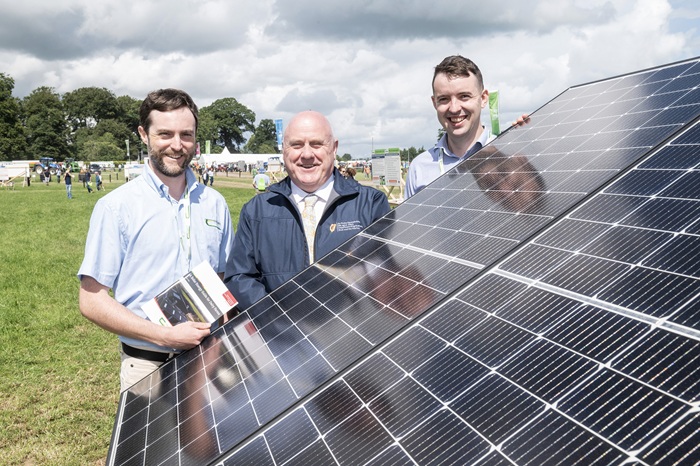All dairy farmers need to know about solar

A new guide, jointly authored by Teagasc and Munster Technological University (MTU), offers dairy farmers practical insights into cutting energy bills and lowering emissions through solar power.
Dairy farms are particularly well-suited for solar PV due to their consistent electricity demand throughout the year. The energy-intensive nature of milking parlours, milk cooling systems and water heating makes the self-consumption of solar power highly beneficial.
The Solar Energy Guide for Dairy Farms, launched at this week’s Moorepark Open Day by Noel Grealish TD, Minister of State at the Department of Agriculture, Food and the Marine, provides a practical and up-to-date overview of solar photovoltaic (PV) technology for dairy farms, covering how PV systems work, installation considerations, planning requirements and the financial supports available.
The guide provides clear, evidence-based information on how to assess, install and benefit from these systems. The publications also answers common questions on system design, planning permission, battery storage and grants. It includes up-to-date details on the 60% TAMS grant, export tariffs, and the new Small-Scale Renewable Electricity Support Scheme (SRESS). It also highlights a free online tool, FaRMOT, developed by MTU and Teagasc, to help farmers optimise energy savings.
Speaking at the Moorepark’25 Open Day, the lead author, Dr John Upton of Teagasc said: “This guide will help farmers make confident, informed decisions. Solar PV is no longer just a green option; it is a smart investment that supports farm resilience.”
Beyond financial savings, solar PV contributes to environmental sustainability by reducing greenhouse gas emissions. For example, a 26 kWp system on a dairy farm can offset approximately 7.5 tonnes of CO2 annually, demonstrating the role of renewables in achieving climate targets.
‘A Solar Energy Guide for Dairy Farms’ (PDF) is available to download here.
